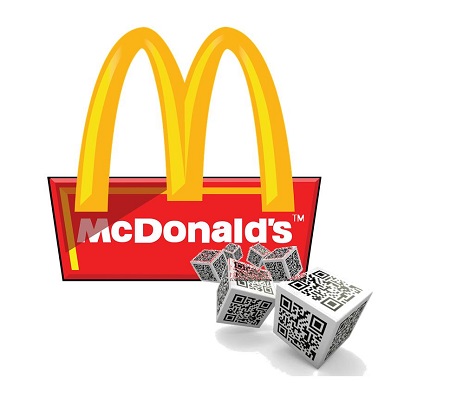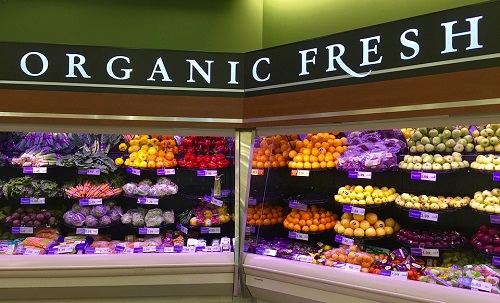A pilot program is now underway using QuickPay for WeChat customers in the country.
McDonald’s is now running a pilot project using QR code payments with a cashback offer. Customers using WeChat can get 50% cash back when they use the QuickPay service. This is exclusive to select restaurants in South Africa.
The goal is to encourage people who are already using the social messaging app to pay with their smartphones.
Participating restaurants are located in Cape Town and Johannesburg. Customers using the WeChat mobile app are being offered a special 50% cashback offer. This is mean to encourage them to use the QuickPay QR code payments at McDonald’s in a participating location.
 This incentive is meant to help to encourage customers to try the mobile payments for the first time. By showing them how easy it is to pay for an order simply by presenting the QR codes at the point of sale so they can be scanned, McDonald’s hopes that consumers will be taken with the service and will continue to use it.
This incentive is meant to help to encourage customers to try the mobile payments for the first time. By showing them how easy it is to pay for an order simply by presenting the QR codes at the point of sale so they can be scanned, McDonald’s hopes that consumers will be taken with the service and will continue to use it.
The QR code payment cashback offer is available to the first 20,000 customers to use the service.
Those customers will receive 50% cash back when they pay for their meals with their smartphones. According to the McDonald’s South Africa chief marketing officer, Daniel Padiachy, “We are continuously searching for innovative ways to enhance our customers’ experience.” He added that “We believe that WeChat’s Quick Pay will further assist us in upholding these principles.”
The WeChat app first launched in the country in November 2015. The app is owned by Tencent, the ecommerce giant from China. Payments through the service have been made possible in South Africa through a partnership with Standard Bank.
WeChat makes it possible for users to make P2P transfers as well as to scan QR codes to make payments in-store at any of 30,000 merchants across the country that support the SnapScan platform. The mobile app can also be used to purchase wireless services such as airtime and data, as well as to pay certain utility bills.
While Quick Pay is functioning within the SnapScan WeChat feature, that QR code payments option is currently available exclusively at McDonald’s.
Quick response codes may soon be a prime way to identify which products contain GMO ingredients.
A huge debate is currently raging over the use of food label QR codes to reveal the presence of GMO ingredients. Supporters think this is a quick and easy way to provide consumers with this information. Those opposed feel that it is not enough to make the presence of GMO ingredients known.
A new law has been signed by President Barack Obama that requires GMO foods to be clearly labeled.
This law tells food manufacturers that they must show when genetically modified ingredients are used in their products. It must be presented in plain writing, include an icon created by regulators, or offer information via food label QR codes. That said, healthful food advocates have said that the quick response codes place a barrier between the consumer and the labeling information they need.
Food label QR codes would require the consumer to use a smartphone or tablet to scan with a dedicated app.
 The advocates would like GMO ingredients to be labeled more explicitly than that. If a QR code scan is required in order to obtain the information, not all consumers will be able to easily access it.
The advocates would like GMO ingredients to be labeled more explicitly than that. If a QR code scan is required in order to obtain the information, not all consumers will be able to easily access it.
According to the Just Label It advocacy group chairperson, Gary Hirshberg, “It is my hope that food corporations reject high-tech gimmicks like QR codes.” Similarly, the Organic Consumers Association activist group has launched a new online petition. The petition against the labeling law that allows GMO disclosures through barcodes currently has over 500,000 signatures. That total was achieved in its first week, and the number continues to grow.
At the same time, food manufacturers insist that using food label QR codes is not for deception. There is no subterfuge in their goals, they say. Food Marketing Institute senior vice president of industry relations, Mark Baum, said “I think it’s a red herring,” of the law’s critics. That institute conducted a study which revealed that only one in five American consumers will scan quick response codes to learn about food products. That said, Baum feels that the number of scanning consumers will rise as more detailed information becomes available through this method.
 This incentive is meant to help to encourage customers to try the mobile payments for the first time. By showing them how easy it is to pay for an order simply by presenting the QR codes at the point of sale so they can be scanned, McDonald’s hopes that consumers will be taken with the service and will continue to use it.
This incentive is meant to help to encourage customers to try the mobile payments for the first time. By showing them how easy it is to pay for an order simply by presenting the QR codes at the point of sale so they can be scanned, McDonald’s hopes that consumers will be taken with the service and will continue to use it.
 The advocates would like GMO ingredients to be labeled more explicitly than that. If a
The advocates would like GMO ingredients to be labeled more explicitly than that. If a 